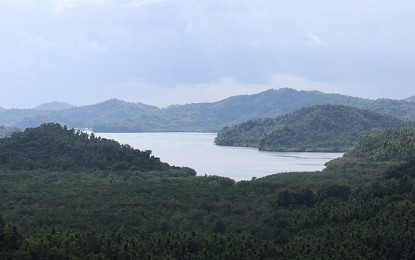
RED TIDE POSITIVE. A view of Cambatutay Bay in Tarangnan, Samar. Water samples collected in the bay turned positive for toxic red tide, prompting the Bureau of Fisheries and Aquatic Resources (BFAR) to raise a warning on the consumption of shellfish gathered in the area. (Photo courtesy of Patrick Roque)
TACLOBAN CITY – Water samples collected in Cambatutay Bay in Tarangnan, Samar turned positive for toxic red tide, prompting the Bureau of Fisheries and Aquatic Resources (BFAR) to raise warning on the consumption of shellfish gathered in the area.
In a local advisory issued on Tuesday, BFAR said the seawater of Cambatutay Bay was positive for Pyrodinium bahamense, a toxic microorganism that causes paralytic shellfish poisoning.
The sustained warm weather in the past weeks and soil erosion coming from river systems during rainy days are the two major factors that triggered the recurrence of the red tide phenomenon in the bay.
Red tide recurred in Cambatutay Bay after nearly two years, according to BFAR.
Earlier, the fisheries bureau raised the red tide warning in San Pedro Bay in Basey town, coastal waters of Calbayog City, and Irong-Irong Bay in Catbalogan City, all in Samar; and Matarinao Bay in the towns of General MacArthur, Quinapondan, Hernani, and Salcedo in Eastern Samar.
The BFAR regional office sent water and shellfish meat samples collected from these bays to their main office for confirmatory testing and inclusion in future shellfish bulletins.
“To safeguard human lives, we are issuing this warning as a precautionary advice to the public to refrain from gathering, selling and eating all types of shellfish and Acetes sp. locally known as 'alamang' or 'hipon' from these bays,” BFAR said in its local shellfish bulletin.
Fish, squid, crab and shrimp gathered from these areas are safe to eat provided all entrails are removed, and the marine products are washed thoroughly with running water before cooking.
The monitoring continues amid the lifting of the shellfish ban in some areas in the region to check for any possible recurrence. (PNA)
